A glycolic acid peel done is a quick and effective way to rejuvenate the skin. Dermatologists use a 30- to 70-percent concentration of glycolic acid, and it stays on your skin for only three or five minutes. These are often called “lunchtime peels” because they can be done easily during your break, with little downtime.
While the term “peel” makes the treatment sound harsh, it’s actually quite gentle. You’ll feel some tingling, but there’s no burning, redness, or discomfort. The benefit of doing an in-office peel lies in the higher concentration of glycolic acid, which ultimately leads to better results
The benefit of doing an in-office peel lies in the higher concentration of glycolic acid, which ultimately leads to better results
According to Dr. Condon, “It is common to experience redness, dryness, and peeling. Typically, immediately after the peel, the skin will feel tight and look red. With some, by day two to three, post-peel skin can begin to slough and shed. The level of peeling again depends on the intensity of the peel. With mild peels, expect gentle sloughing, and with stronger peels, skin can peel more dramatically. The complete turnaround time typically is between five to seven days. In this time, be sure to treat skin gently. Do not use any exfoliation products or devices, and it’s imperative that precautions against UV exposure be taken to prevent hyperpigmentation.” Finally advice will be given on rehydrating your skin.

